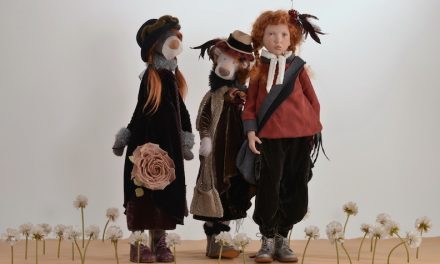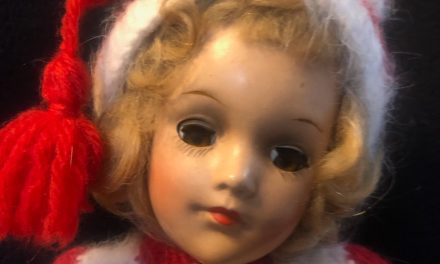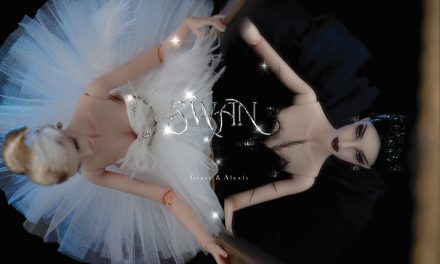
Right: Beautiful Crissy (1969-70) is dressed in the Sleeper Bells outfit and standing beside the Fashion Boutique box. Courtesy of Nikki Hill
By Judith Izen
A doll whose hair grows — what a revolutionary idea! Many children through the ages wished for such a doll after they gave their doll a haircut. Fortunately for us, one child’s mother came up with the idea for a doll with growing hair, and their father made it happen.
Tressy
The most popular grow-hair doll was Tressy, who was introduced in 1964 by the American Character Doll Company of New York. Tressy was an 11.5-inch all-vinyl fashion doll with rooted Saran hair. She had a button on her stomach to make her hair grow and a large knob on her back to make it shorter. Just like the popular Barbie doll by Mattel of the same era, Tressy came with a little fashion booklet that enticed children to purchase all of her outfits. Tressy’s grow-hair feature and vast selection of fashions made her one of the most popular dolls of all time.
The idea for a doll whose hair could grow was originated by Diane Dean when her toddler, Lisa, cut all of the hair off a new doll. Diane’s husband, Jesse W. Dean, a furniture designer, designed the grow-hair mechanism that brought Tressy into reality.
Tressy’s novelty, in combination with heavy advertising on children’s television programs such as Captain Kangaroo, spurred such growth of American Character that they added other versions of Tressy. These included bending legs in 1965 and a “Magic Makeup” face that same year. They also added dolls to the Tressy line — a younger sister, Cricket, and a friend, Mary Makeup.
All three versions of Tressy were jointed at the neck, arms, and legs. The first version of Tressy had straight legs, painted side-glancing black eyes, and blue eyeshadow. This Tressy came dressed in a red knit shift, white soutache belt, and white vinyl heels. Also included in her box were a hair-styling book and a fashion stand with her name on it.
Tressy was available in an assortment of hair colors: brunette, reddish brown, golden brown, platinum blond, and blond. She sold for $4.50. All Tressy dolls are marked “Amer.Char. / 1963” (in a circle on her head).
The second version was introduced in 1965 and had posable legs. In July 1965, the Tressy Makeup version was released. This version had a pale face so the makeup kit (sold separately) could be used to give Tressy a makeover.
Growing hair truly was Tressy’s crowning glory. There was such an emphasis on her growing hair that the pamphlet included with each doll devoted as much space to explaining how to produce certain hair styles as it did to her outfits.
The outfits designed for Tressy were very “au courant” and came with adorable little accessories. The fashions were representative of the early 1960s era, especially “Hootenanny” — complete with a harmonica, guitar, and black sweater — and “World’s Fair,” which came with a camera to commemorate the 1964 New York World’s Fair. Tressy had outfits for an active lifestyle. She could enjoy bowling, a summer holiday, swimming, sailing, a surprise party, and even winning a beauty contest. Also indicative of the early ’60s was her professional outfit “Executive Suite,” where the accessories were a steno pad, eyeglasses, and a dictionary. Clearly, Tressy hadn’t yet broken through the glass ceiling.
Tressy had many accessories, an apartment, and a budget line of clothing. The most coveted Tressy for collectors due to her rarity is Black Tressy, who was introduced in 1965 and had a makeup face.
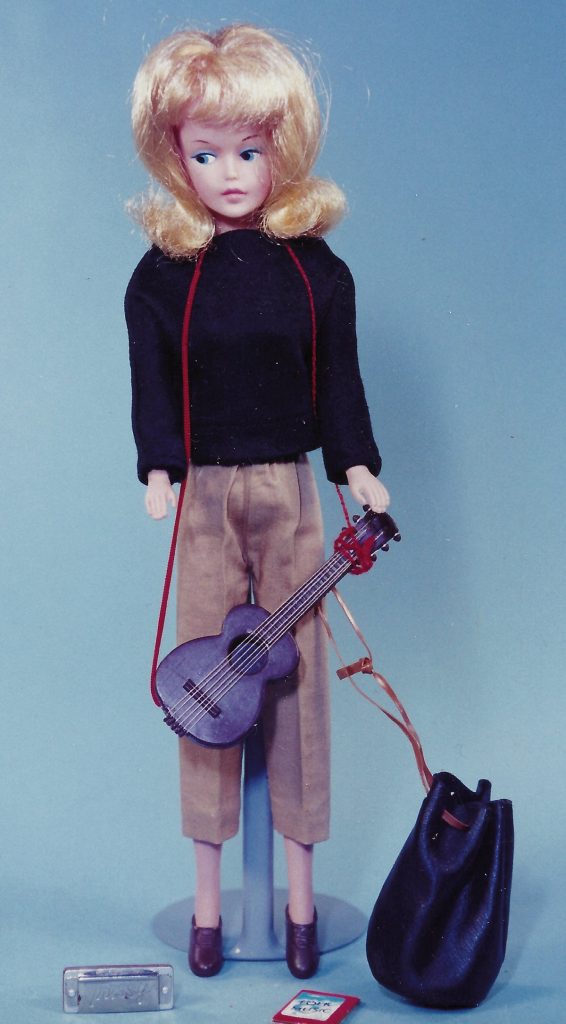
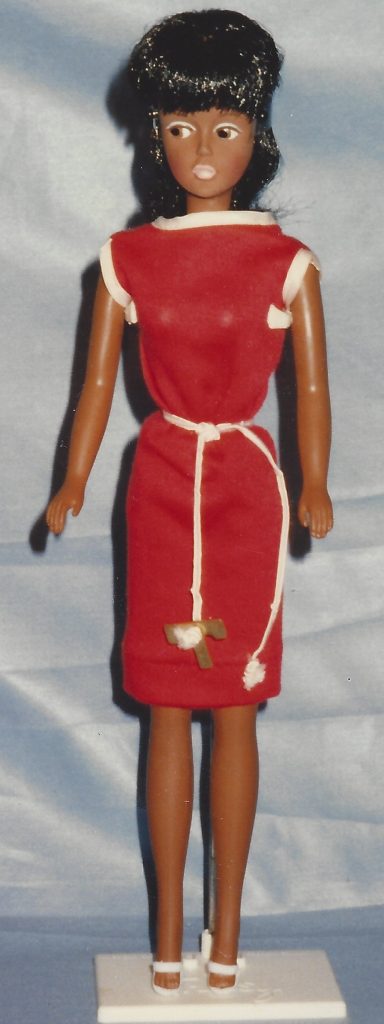

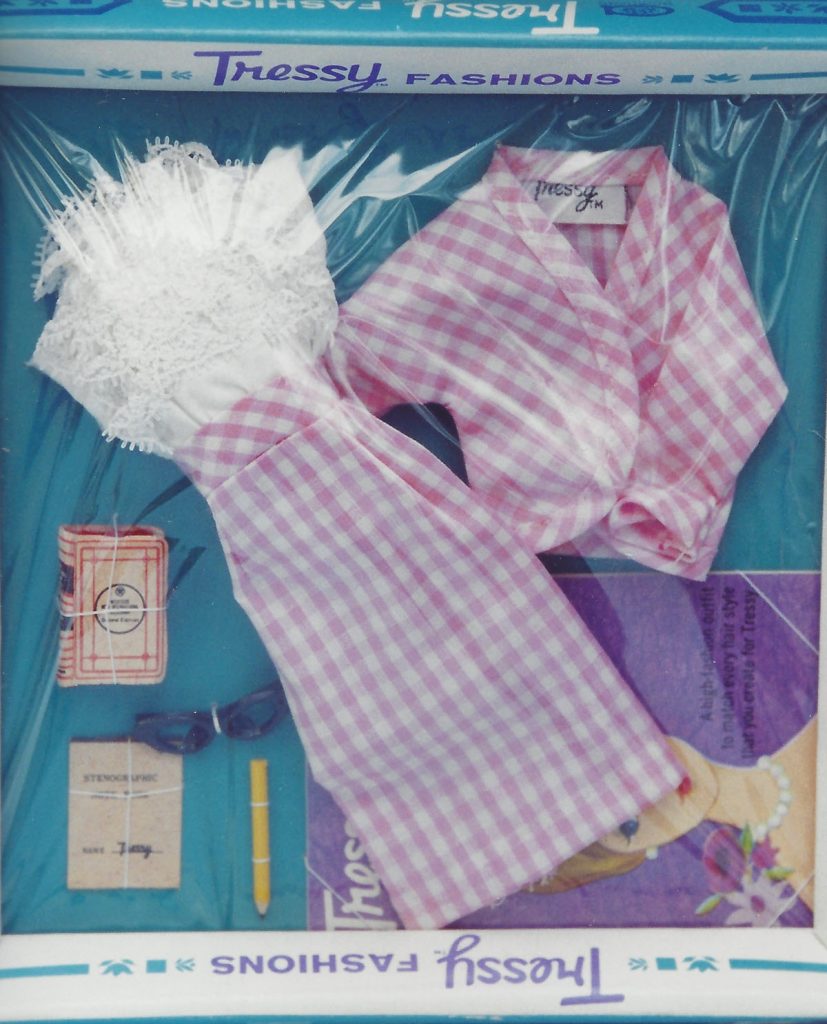
Crissy
American Character, maker of Tressy, went out of business in 1968. The Ideal Toy Company of New York bought the rights to Tressy’s grow-hair feature and her name. Ideal then produced a larger version of a grow-hair doll in 1969 and named her Beautiful Crissy. This doll was 17.5 inches and had a preteen body with a bright smile, auburn hair, black iris-less eyes, and a mod and stylish wardrobe. The first version of Crissy had hair that grew to the floor. Hair to Floor Crissy, as she is called by collectors, is marked “© 1968 IDEAL TOY CORP. / GH-17-H126” on her neck and “1969 IDEAL-TOY-CORP / GH 18 / US PAT 3,162,976” on her back. Later Crissy dolls had hair that just grew to her hips.
Crissy was such a huge success for Ideal that millions of Crissy dolls and her outfits were produced. For this reason, Crissy is a doll that is affordable and very accessible to collectors.
Crissy’s clothing, especially the Fashion Boutique outfits available from 1969 to 1970, captures the essence of the mod and hippie period in the U.S. Most of her pants are bell-bottoms and the dresses are miniskirts. There is even a “Peace Poncho” that is most evocative of the era’s anti-war movement. This hippie theme was very evident in the later Crissy fashions from 1971 to 1972.
Ideal manufactured many Crissy variations in the early 1970s, including a Black Crissy, a Talking Crissy, and even a Talking Crissy that spoke Spanish! Other variations included Movin’ and Groovin’ Crissy, whose waist twisted around when her string was pulled; Look Around Crissy, whose waist could be moved manually; Swirla-Curler Crissy, who had hair accessories; and Twirly Beads Crissy, who came with beads.
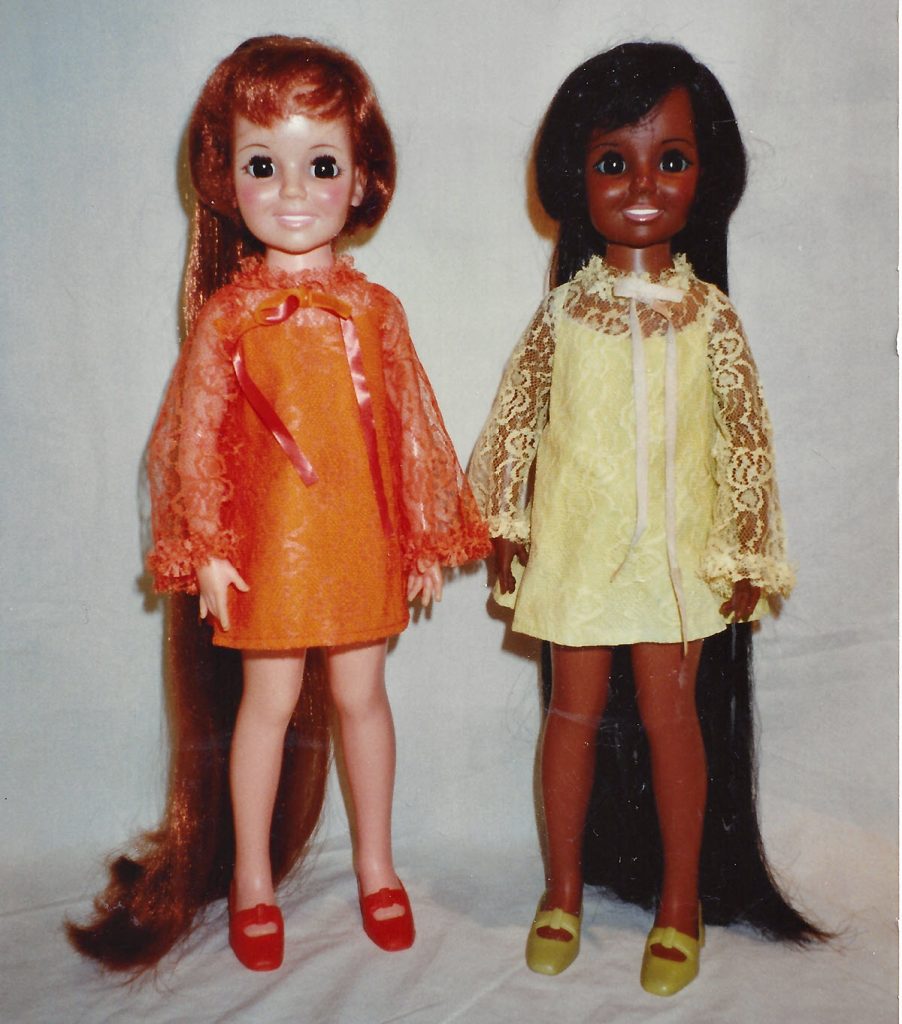
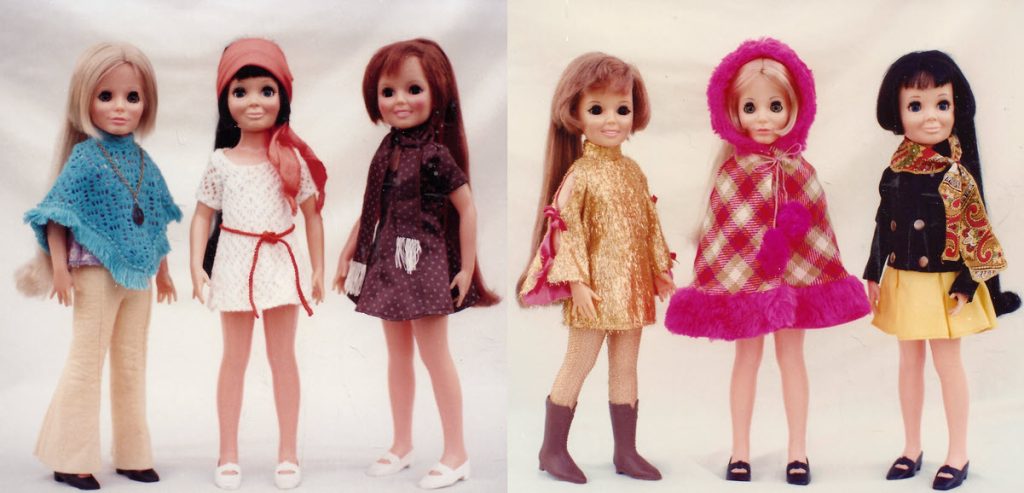
Ideal added to the Crissy line with an extended family, which included younger cousins 15.5-inch Velvet and 13.5-inch Cinnamon; 17.5-inch friends Tressy, Kerry, and Brandi; Velvet’s friends Mia, Cricket, and Dina; and Baby Crissy. These dolls were each sold for a year or two, with Baby Crissy being sold until 1976. Notice that Ideal used the Tressy name for one of their large-sized grow-hair dolls.
Luckily, because it is not difficult to find a working Crissy in mint condition, we can play with her hair and even cut it if we wish. Crissy and Tressy are fun, affordable dolls that allow us to relive a portion of our mod past. They can really let their hair down!
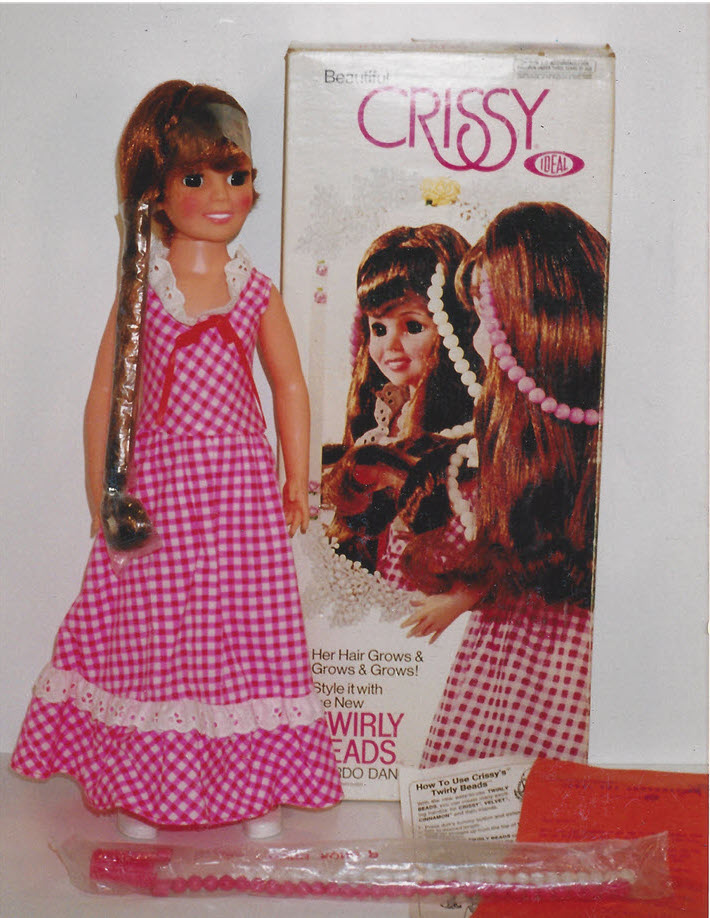
Judith Izen is the author of several books on collectible dolls: Collector’s Encyclopedia of Vogue Dolls, coauthored by Carol Stover; Collector’s Guide to Ideal Dolls; and American Character Dolls: Identification & Value Guide.

